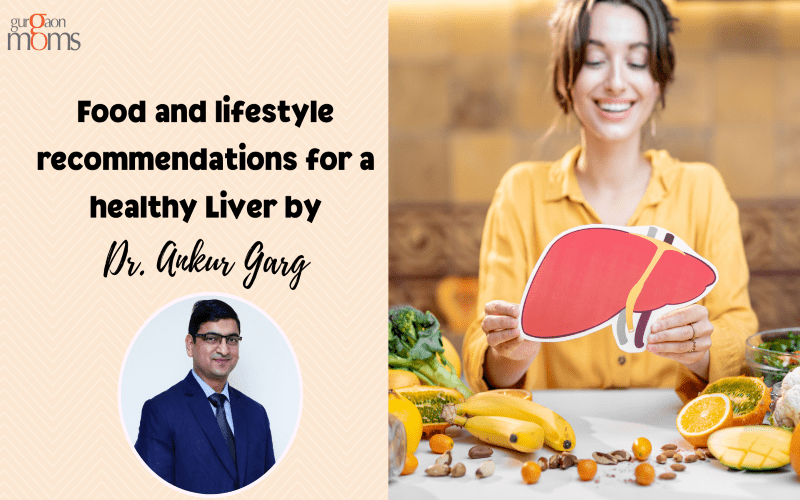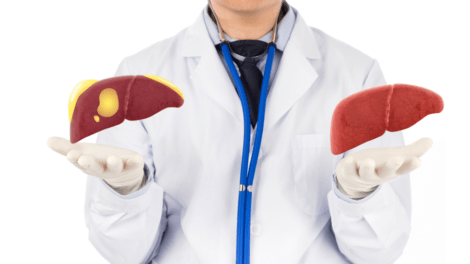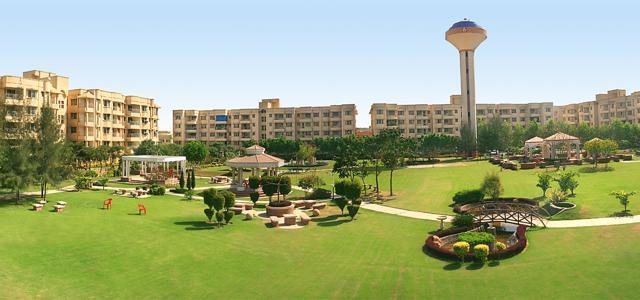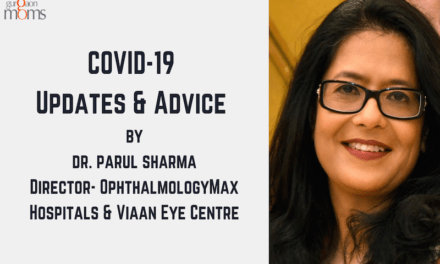‘Is life worth living? It all depends on the liver.’
These words by American philosopher William James serve as a reminder that the health of your liver is of utmost importance in living a healthy life. If you want to live, you must have a liver and a healthy one at that!
Let’s explore, why?
Of the approximately 500 functions of the liver, the most important ones include: synthesis of amino acids and cholesterol; metabolism of carbohydrates, proteins, and fats; and the production of bile, which assists in digestion in the small intestine. The liver plays several roles in the regulation of the blood, breaks down insulin and toxic substances, and allows them to be excreted. It’s a lesser-known fact that Liver, the largest solid organ and the largest gland, aids all kinds of health and promotes overall growth of the human body, actively supporting almost all the other organs.
In Chinese medicine, the liver is known as the yin organ of the wood element. Since spring is the season of the year in which wood energy is at its peak, spring is the best time to support this organ.
One of the most important organs that gets affected with imbalanced diet and is often overlooked is our Liver. Why does this happen? It is because the liver has a large functional reserve and enough reparative capacity on its own, due to which any disorder doesn’t manifest unless it has gone beyond 60-70% damage and unfortunately for many it’s a very late diagnosis, to be able to do anything about it. An important note to make here is, that commonly done blood test such as LFT (Liver Function Test) is a very poor marker of liver disease per se.
While we are mostly aware of food choices, which are a must-have-nots, we seldom actually pay attention to how detrimental these are for health. For. eg. like any other diet recommend by nutritionists, some of the food that are best avoided, to maintain good liver health is avoiding– fatty foods especially rich in saturated fats, vegetable oils, etc. as these have a direct negative impact on our heart and lead to vascular diseases too. However, basing an assumption that by only avoiding fatty foods, our diet is healthy, will also be a big misconstruction.
So, let’s gain some insight into which foods can have a great effect on our liver, and can save us from health issues and hospital visits.
Some quick food recommendations, for you to add to your daily meals –
Coffee: Yes, some of the recent global studies have unanimously voted and reviewed, that consuming coffee daily is a great way to ensure great liver health. It is because coffee helps reduce fat build-up in the liver, increases protective antioxidants, and helps it against fatty liver disease. So, wait no more, smell some beans and now have them too!
Tea: Widely considered to be beneficial for health, evidence has it that tea, particularly has many benefits for the liver. Regularly drinking green tea can help improve liver enzymes level, which can reduce oxidative stress and fat deposits in the liver. A word of caution – people with active liver problems or issues, must exercise some discretion, as in some cases consuming green tea as a supplement can aggravate liver issues (this is as per the data collected via various reports of liver damage resulting from the use of supplements containing green tea extract).
Oatmeal: Consuming oatmeal is another easy way to add fiber to the diet and works fabulously well in aiding our digestive system. Some of the specific fibers found in oats are especially helpful for the liver. Oats and oatmeal are high in compounds called beta-glucans, which helps in reducing the number of fat stores in our liver, thereby unburdening its storage capacity.
Berries: Many dark berries — including blueberries, raspberries, and cranberries — contain antioxidants called polyphenols and anthocyanins, which help protect the liver from damage. Additionally, berries also slow down the development of lesions and its juice can help alleviate liver fibrosis, they also inhibit the growth of human liver cancer cells, however, more studies need to be undertaken, to verify these benefits.
Grapefruit: Grapefruit contains two primary antioxidants: naringin and naringenin. These protect the liver from any injury by reducing inflammation and protecting the liver cells. Having said this, it’s important to mention, that several medications that are metabolized in the liver can interact with grapefruit, so you must check with the doctor before adding grapefruit or grapefruit juice to your diet.
Plant foods in general: It’s widely reported across medical journals around the world, that many plant-based foods are of great help to the liver.
Some of these include:
- Avocados
- Bananas
- Barley
- Beets and beet juice
- Broccoli
- Brown rice
- Carrots
- Figs
- Greens such as kale and collards
- Lemons
- Papayas
- Watermelons
People should eat these foods, if possible, as part of a whole and balanced diet.
Fatty fish: Consuming fatty fish and fish oil supplements can also reduce the impact of conditions such as NAFLD (Non-Alcoholic Fatty Liver Disease).Fatty fish is rich in omega-3 fatty acids, which are good fats that help reduce inflammation. These fats can be especially helpful in the liver, as they appear to prevent the buildup of excess fats and maintain enzyme levels in the liver.
Nuts : Eating nuts can be another simple way to keep the liver healthy and protect against NAFLD. Nuts generally contain unsaturated fatty acids, vitamin E, and antioxidants. These compounds help prevent NAFLD and reduce inflammation and oxidative stress. Any damage at cellular or molecular level in our bodies , ultimately happens via oxidation. Having adequate amount of anti-oxidants in our diet not only helps our liver but overall body including our skin and hair .
All in all, a balanced diet is the healthiest one for liver. Broadly speaking, we can say that a diet with 10 to 35 percent of calories from protein, 20 to 35 percent from fat, and 45 to 65 percent from carbohydrates is a balanced diet with enough sources of all essential minerals and micro-nutrients.
Another caveat here is the ‘source’ from where we are consuming the food or what forms our diet, it varies across regions and ethnicities. Depending upon geographic locations and food source, people from a specific region can be found deficient in specific micro-nutrients which can lead to disorders e.g. people living at high altitudes and consuming non-iodinated rock salt, often complaint of having Goiter.
‘Lifestyle’ is another key factor here. The health of your liver greatly rests on the ‘lifestyle’ you follow, whether active or sedentary, which will impact it either positively or negatively!
NAFLD (Non-Alcoholic Fatty Liver Disease) a silent epidemic, is slowly impacting the world’s health!
The commonly used term, NAFLD (Non- Alcoholic Fatty Liver Disease) is a fast-growing health concern, commonly faced across the world population, today. To understand NAFLD we also need to understand the conditions- Fatty Liver, NAFL (Non-Alcoholic Fatty Liver) and NASH (Non-Alcoholic Steatohepatitis). Terminologically, NAFLD is the buildup of fat in the liver that is not caused by heavy alcohol use. When heavy alcohol use causes fat to build up in the liver, the condition is called Alcohol-Associated Liver Disease.
Simple Fatty Liver, if doesn’t progress is largely harmless. Just like obesity where an excess of fat is deposited under the skin and other organs, in the case of Fatty Liver excess fat gets deposited in the liver.
If kept unchecked this condition can gradually progress to the next stage i.e., Non-Alcoholic Steatohepatitis (NASH), which is when LFTs (Liver Function Tests), start showing changes and derangements. If still not checked, this condition can further progress to fibrosis and then to cirrhosis or what is called end-stage liver disease.
So the four stages can be summarized as :
- Simple fatty liver: There is a buildup of fat in the liver.
- Steatohepatitis: In addition to excess fat, there’s also inflammation in the liver.
- Fibrosis: Persistent inflammation in the liver now causes scarring. However, the liver can still generally function normally.
- Cirrhosis: Scarring of the liver becomes widespread, impairing the liver’s ability to function. This is the most severe stage and is irreversible.
Certain risk factors for NAFLD, which makes its occurrence more probable, include
- Obesity
- Type 2 diabetes
- Insulin resistance
- High levels of fat, especially triglycerides, in the blood
- Metabolic syndrome
Other potential causes of fatty liver can be:
- Pregnancy
- Side effects from some types of medications
- Some types of infections, such as hepatitis C
- Certain rare genetic conditions
NAFLD is a silent epidemic, and its incidence are ever increasing on the global health charts. Around 15-20% of liver transplants worldwide happen because of this, which is not a small figure. So don’t ignore any signs or symptoms of fatty liver, and duly check yourself for risk factors and potential causes in case you fall under any of the above categories.
Fatty Liver is an entirely reversible condition and can be well managed with changes in lifestyle and medications.
So take care of your Liver, in these simple ways –
- Follow a healthy lifestyle and balanced diet
- Keep a close eye on medication and supplements
- Don’t drink too much alcohol, as this can lead to swelling and scarring of the liver
- Keep your weight under control
- Exercise regularly
- Get tested for Hepatitis B and C, high cholesterol and diabetes
For Liver is a regenerative and most forgiving organ of all, but it has its limits too!







